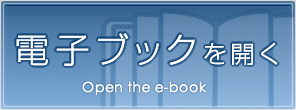Recommendation of the Road page 5/46
このページは Recommendation of the Road の電子ブックに掲載されている5ページの概要です。
秒後に電子ブックの対象ページへ移動します。
「電子ブックを開く」をクリックすると今すぐ対象ページへ移動します。
概要:
However, "the vessel of 25,000 G/T or more" carrying liquefied gas, which has both an escortboat and a boat with specified fire fighting equipment (only the "huge vessel" carrying liquefied gasis requ....
However, "the vessel of 25,000 G/T or more" carrying liquefied gas, which has both an escortboat and a boat with specified fire fighting equipment (only the "huge vessel" carrying liquefied gasis required to be escorted by the latter boat), can enter "Uraga Suido Traffic Route" at the followingtimes. From sunset to 05:00 (only for vessel proceeding from the south to the north of Tokyo Bay)From 20:00 to one hour before sunrise (for the vessel proceeding from the north to the south ofTokyo Bay) N.B.: In the above case, one of the boats must have a night vision device such as NVG.(2) Vessels towing or pushing long objects whose distance is 200 m or more should enter the UragaSuido Traffic Route from sunrise till 1 hour before sunset.7. Waiting places under navigational restrictionWhen navigation in the traffic route is restricted because of poor visibility or other reasons, avessel inward which is entering Tokyo Bay should wait outside of Tokyo Bay and a vessel outwardwhich is leaving Tokyo Bay should wait in the place where traffic is not heavy.8. Restriction on use of auto-pilotA vessel navigating in Tokyo Bay should not use auto-pilot.9. Preparation of emergency fire wiresA vessel carrying dangerous cargo prescribed by the Act on Maritime Traffic Safety should prepareemergency fire wires at the bow and the stern for immediate use in case of emergency.10. Position report (Refer to Fig. 1)Vessels with a length of 50m or over (except vessels equipped with an automatic identificationsystem (AIS) ) and vessels with a gross tonnage of 100 or over with accommodations for 30 peopleor more should report their position to Tokyo Wan Vessel Traffic Service Center when they crossthe first position reporting line on entering or leaving Tokyo Bay or sailing inside the bay.a. Name of vessel and Call signb. Abbreviation and passing time (J.S.T) for the present position or position reporting linec. Destination11. Communication with Tokyo Bay Vessel Traffic Service Center(1) Vessels equipped with VHF (CH16, 156.8 MHz) should keep contact with Tokyo Wan VesselTraffic Service Center while sailing in the traffic route, the main traffic route entering the routeand in the vicinity since information on safety navigation might be provided by the center.(2) Fog informationWhen the visibility has dropped to 2,000m, fog information will be broadcasted from the followinginstitution and can be received at any time:3rd Regional Coast Guard Headquarters (Yokohama Hoan)F3E 156.6 MHz (ch12) in Japanese or English12. Preparation of chartsVessels navigating in Tokyo Bay should at least prepare the following charts and obtain the latestinformation on the ports in advance.

